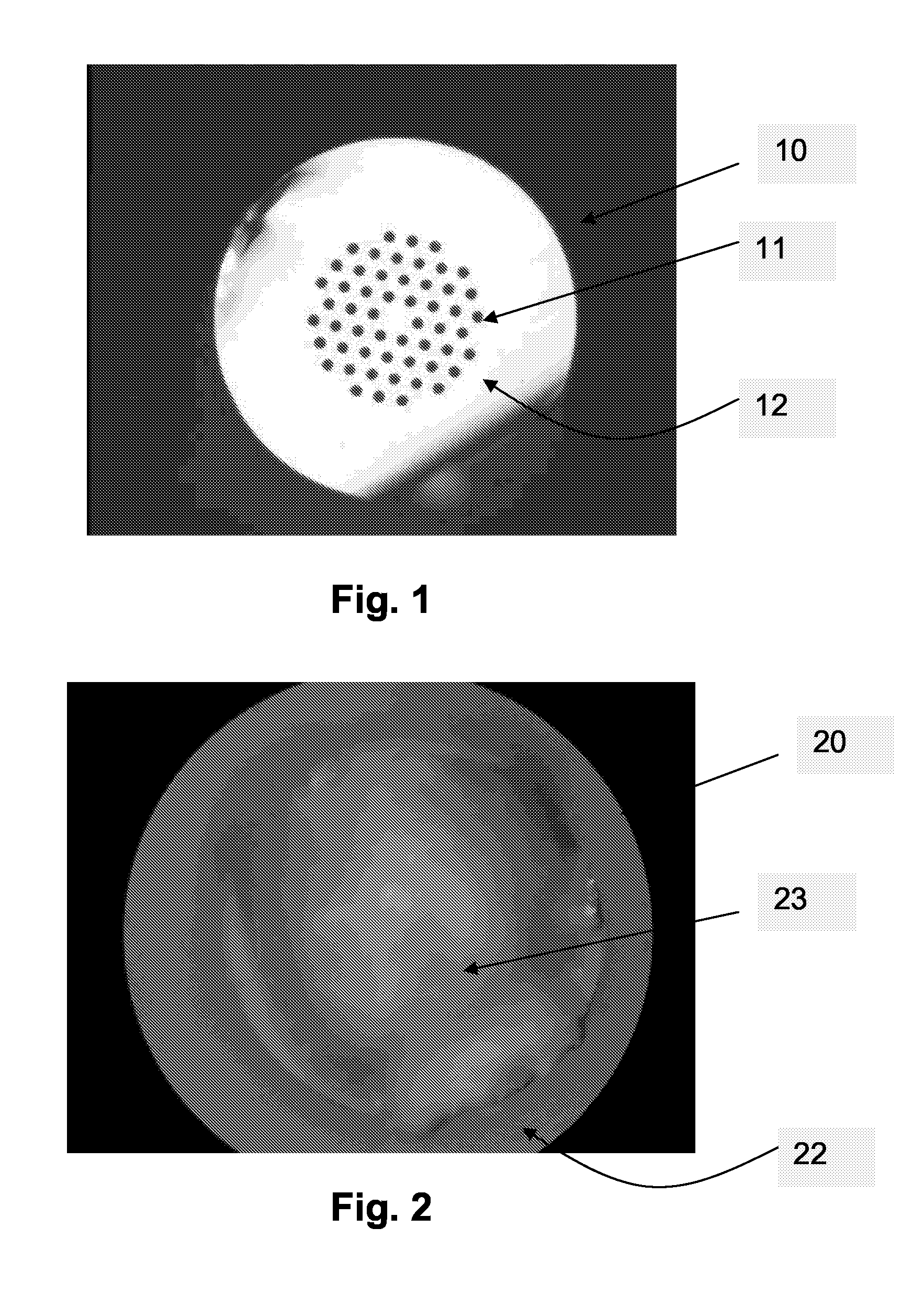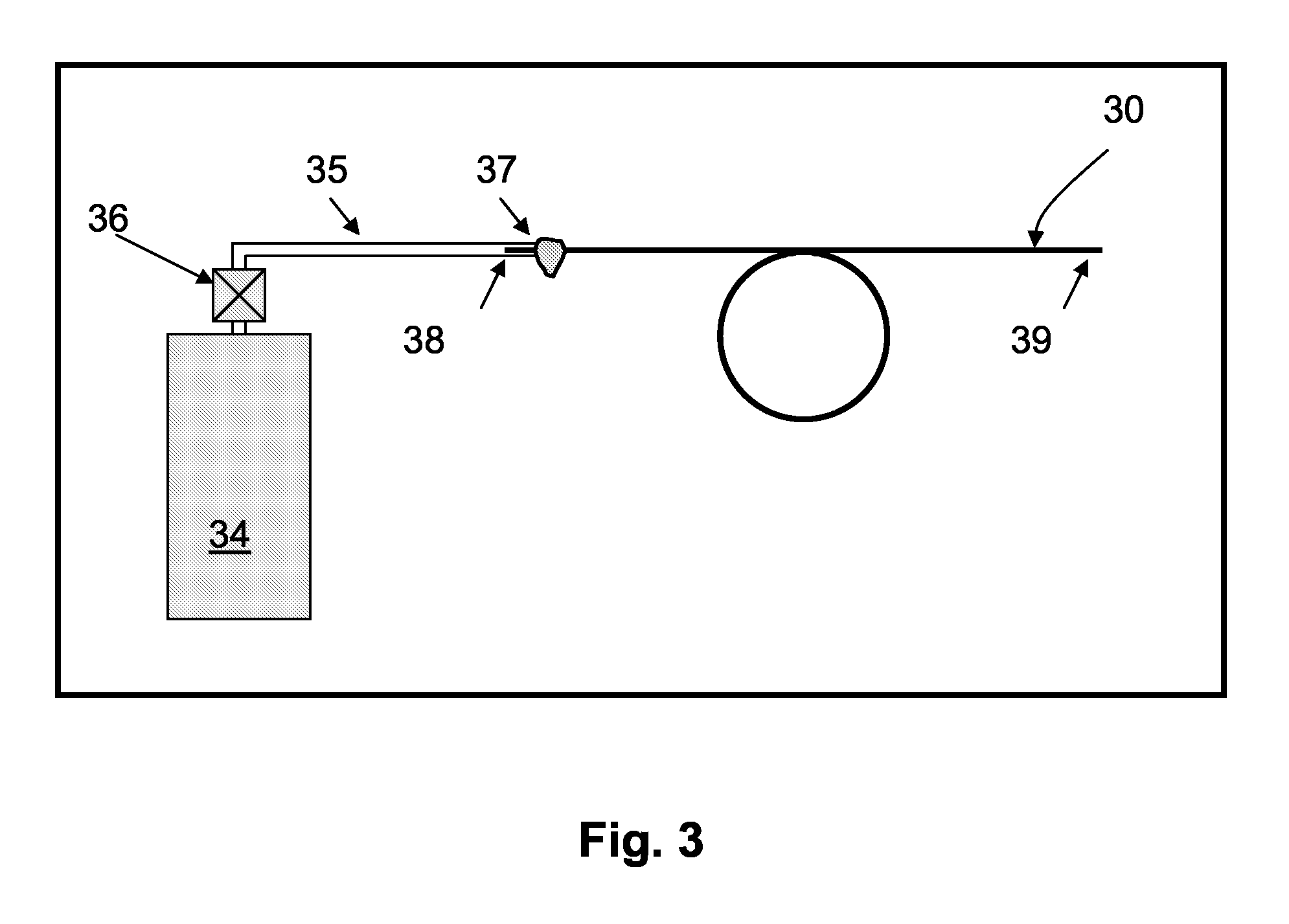Method of inducing refractive index structures in a micro-structured fiber, a micro-structured fiber and an article
a micro-structured fiber and refractive index technology, applied in the field of inducing refractive index structures in micro-structured fibers, micro-structured fibers and articles, can solve the problems of difficult uv-imprinting, fbg's in micro-structured fibers, and doping by itself does not provide sufficient photo-sensitivity
- Summary
- Abstract
- Description
- Claims
- Application Information
AI Technical Summary
Benefits of technology
Problems solved by technology
Method used
Image
Examples
example 1
[0067]A fiber Bragg grating was made by first He-flushing a micro-structured fiber: a He-pressure bottle was connected to the holes of the micro-structured fiber via a plastic tube with low inner diameter to fit closely over the fiber. The opening between tube and fiber outer diameter was sealed using acrylate glue. The other end of the approximately 3 meter long fiber was left open. He at a pressure of 5 bar was applied for approximately 24 hours. This rather long time span was required due to the high flow resistance presented by the small size holes of the micro-structured fiber. At the end of the flushing process the open end of the fiber was sealed using acrylate glue. Subsequently the other end was sealed in the same manner, and the fiber was placed in a deuterium loading chamber at a D2 pressure of approximately 150 bar and a temperature of approximately 80° C. for approximately 24 hours. After deuterium loading a fiber Bragg grating was UV-written in the fiber using a unifor...
example 2
[0068]A fiber Bragg grating was made as described in EXAMPLE 1, only without performing the step of flushing the holes of the micro-structured fiber with a protective gas prior to the sealing of the ends of the fiber.
example 3
[0069]A fiber Bragg grating was made as described in EXAMPLE 1, only substituting the step of flushing the holes of the micro-structured fiber with a protective gas with the step of evacuating of the holes to a pressure of 0.001 atm.
PUM
 Login to View More
Login to View More Abstract
Description
Claims
Application Information
 Login to View More
Login to View More - R&D
- Intellectual Property
- Life Sciences
- Materials
- Tech Scout
- Unparalleled Data Quality
- Higher Quality Content
- 60% Fewer Hallucinations
Browse by: Latest US Patents, China's latest patents, Technical Efficacy Thesaurus, Application Domain, Technology Topic, Popular Technical Reports.
© 2025 PatSnap. All rights reserved.Legal|Privacy policy|Modern Slavery Act Transparency Statement|Sitemap|About US| Contact US: help@patsnap.com


